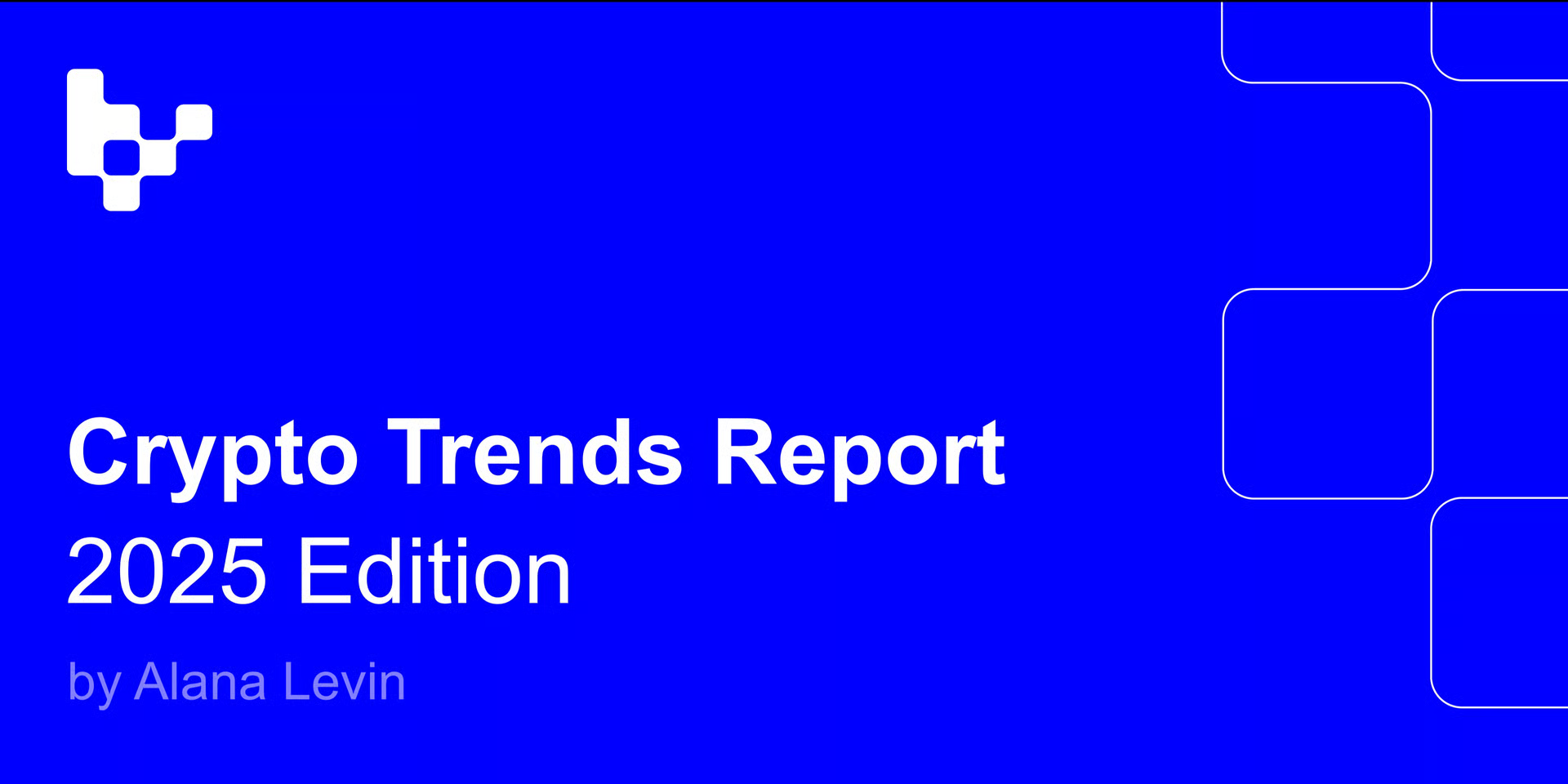Next-gen L1 is bullshit
Nick believes that social innovations are more critical. In Nick’s point of view, in order for L1 to achieve new social innovations, there needs to be a radical approach to on-chain governance / a sovereign chain approach where there is not just a single chain to settle on, but instead there will be multiple app-chains for settlement, all while being interconnected.
🍪’s thoughts: I’ve been thinking about this concept of ‘Governance-as-a-Service’ (disclaimer: It’s a very very bare-bones idea at this stage). The idea originated from a couple considerations:
- There are many stakeholders participating in governance (protocol founders, protocol operators and users), and these stakeholders all have very diverse perceptions of what they think might benefit the protocol / themselves
- When we look across the broader landscape, the interconnectedness of existing protocols is apparent: LST CDP, lending markets, yield farms and many more
Judging from the above 2 points, I believe there is a need to have a common platform of sorts with universal governing metrics. This allows for stakeholders to better understand how their choice affects the outcome and also to pre-empt how passing of proposals for certain protocols could affect other partner protocols.
With a common framework put in place, it could plausibly allow for tracking of protocol data based on proposal history. For example, how did volume of a protocol change following a certain proposal being passed. More metrics can be tracked, including that of users etc. Eventually, with more and more information being collated into a database, it could be used for backtesting. In the future, new protocols can refer to such back-tested results to understand what proposals to push forth and possibly use available data to create a simulation framework.
Nonetheless, I believe the starting point will have to be an incentive program of sorts, that can resolve the cold-start problem of participation. Thereafter, it becomes a fine-tuning game of slowly removing the incentives to maintain a market equilibrium.
Solana
Nick brought up the example of Solana where the narrative was clear: (a) cheaper (b) faster. It’s intuitive and makes sense to people but over the long term it is not something that matters.
🍪’s thoughts: Nick didn’t delve deeper into why it does not matter over the long term, but I would assume its because Solana is a base layer that people do not visibly and tangibly interact with, which I agree with. Nonetheless, I would say that the base layer confers advantages that will be presented in the application layer, which is directly interacting with users. One example would be DePIN, the reason why it is able to perform better on chains like Solana is due to the exact nature of it: Fast. So would it actually matter in the long term? Perhaps perhaps.
Cosmos
Nick then brings up the example of Cosmos, which as of this point does not seem to have a clear narrative as it is not relatable to anything existing. And by Cosmos, he refers to the concept of sovereign chains.
The stronger the narrative, the further it is from the truth
The truth is nuanced and most people do not appreciate nuance. To have a narrative indicates that a lot of people believe in something, which indicates a lack of nuance and statement of something far from the truth.
🍪’s thoughts: Are narratives in some sense, necessary before people are able to identify nuances?
Does the best product always win?
Santiago brought up the the point that sometimes the best product does not win. For example, Osmosis has folks like Zaki steering the ship, building out products that are very interesting with nuanced takes on existing landscapes. However, there is no BD and marketing team to attract market attraction and thus, adoption for the products.
When asked how the above phenomenon plays into 1confirmation’s investment thesis, Nick mentioned that he is focused on authenticity, which will win over time, and that aspects such as BD and marketing will not matter that much in the long term, but perhaps in the short term products with good BD might lead the crowd. In terms of authenticity, Nick briefly mentioned that it refers to products that are innovative from the social perspective and effectively pushing the space forward.
🍪’s thoughts: In the early phases of a new technology, it is typically highly nuanced and not intuitive for the market and users. My belief is that there needs to be combination of both good UI/UX and BD to attract the initial wave of users. Perhaps in the long term, indeed, the stickiness and usefulness of an actually beneficial product / technology will fade the need for excessive BD / marketing, but that doesn’t seem to be the case for early stages.
This is also one of the reasons why I have been keeping my eyes on to see whether there’s any automation tool for UI/UX, not just to design, but also to evaluate the response received from users for the various designs.
Prediction markets: The next to capture mainstream attention
Jason asks Nick what he thinks about prediction markets being the context of disillusioned public trust in institutions, where truth for society used to come from governance and institutions, but in recent times it has become difficult to find this truth for society. And following this train of thoughts, a global super liquid prediction market at scale could be the best way to reveal true information.
Nick agrees with this take and highlighted that markets are fundamentally a better source of truth compared to media and narratives. This is because prediction markets are not solely about narratives, the participants are people with skin in the game speculating on outcomes, which can bring truth to the society.
🍪’s thoughts: But in this case what are the chances for groupthink / peer pressure? People might sub-consciously make a choice based on what they are seeing / what majority of the crowd is choosing.
A very interesting point brought up by Nick was the potential for prediction markets as a business model for creators. This idea stems from the mention by Polymarket’s founder, where he stated his thesis that NFTs succeeded because of its brilliant business model for creators. The same could be said for prediction markets, where every influencer creates their own pool and generate revenue by collecting fees.
Thesis for DAOs
The question to be pondered upon by the market is ‘Can we get products beyond the primary aspect bring speculation and reliance on investment capital’. Nick’s bet for DAOs is for it to develop in human organization to the extent where it allows people from different regions of the world to contribute resources to the same / various organizations. Nick also highlighted that he has yet to see products that make it easy for people to participate in DAOs.
Thesis for NFTs
There were several points made by Nick with regards to the NFT vertical
1. NFTs in 5 years have the potential to be a bigger market than crypto
- NFTs as an investment category is going to keep growing
- More people care about culture than purely finance
- NFTs: Intersection of money and culture
🍪’s thoughts: It’s quite a curious case as to how these investment opportunities could potentially present themselves. As of this point, I would think that projects exploring with ERC-6551 might be interesting to look at, as they are working with nascent design boundaries and might be able to introduce new design forms.
In addition, defi has always been touted to decentralize finance and grant financial access to everybody. The NFT scene is in some sense reminiscent of this, with the traditional art scene being highly gated.
2. NFT valuation framework
A point was mentioned regarding how both crypto and NFTs were valued based on belief, given that there is no cash flow available for valuing them in the traditional manner. Nick mentioned that the approach taken in this case is relative valuation, e.g. Bitcoin to Gold, CryptoPunk to Dogecoin etc.
3. The idolism play
Nick quoted ‘Desire is not based on ourselves, but based on others’. This is apparent with NFTs, when a particular NFT collection is minted by a famous individual, or perhaps even a prominent figure posting a meme of the NFT collection, it could result in significant increase in user demand for that particular collection.
🍪’s thoughts: Very similar to how existing fan behaviour is. For example, fans tend to go to cafes that are visited by idols. Similar concept can be achieved with NFTs.
4. NFT fractionalization
This results in transfer of ownership from strong hands to weak hands. Theoretically it is sound and promotes inclusivity, but time will be required to achieve the right balance.
5. Future of OpenSea… token?
Santiago asked about the future of OpenSea amidst diminishing marketshare due to strong competitors like Blur. Given that crypto marketplaces with tokens tend to be able to align users and investors better, will it make sense for OpenSea to eventually have a token?
Nick finds that OpenSea is the best product to bring new people into crypto. He acknowledges that there are indeed crypto native products that are more appealing to traders due to token incentives. However, he feels that as retail users come on, OpenSea is well positioned to capture these users, as the other platforms are not geared towards mainstream users, in terms of how they work and their interface.
Nonetheless, Nick finds that for marketplaces, giving users the ownership is important and would love to see OpenSea have a token in the future.
🍪’s thoughts: The dominance of OpenSea might have something to do with market cycles as well:
(a) OpenSea’s market share rises very significantly, assuming to 70%
(b) Competitors enter, leading to OpenSea’s market share dropping to 45%. OpenSea still maintains its market leader position despite reducing its market share
(c) New users enter the space and gravitate towards the market leader, in this case, still OpenSea. This increases OpenSea’s market share once again
This could be a loop, and as long as OpenSea maintains the position of a market leader, the market cycle and entrance of new users will help to keep their market share within an equilibrium range. Can be thought of as first mover advantage
Thesis for RWAs
Nick indicated that he doesn’t fancy RWA as much and the main reason it won’t work will be because of user demand. Crypto natives demand innovation, but bringing real estate on-chain is not exactly innovation. In addition, more often than not, RWAs require trust to a certain extent and a third party to be involved e.g. underwriter to underwrite borrowers / lenders.
However, Nick acknowledged that RWAs will eventually work when everybody comes on-chain and seeks portfolio diversification. This is when people will start to diversify into asset classes such as real estate.
🍪’s thoughts: By nature of the North Star of having more people exposed to cryptocurrencies, it does make sense that people will want more diversification into safer assets.
The potential for innovation here might be asset management dapps that maintain the composability of the portfolio assets. As of this point, most defi activities do not require KYC, whereas the contrary can be said for users who wish to participate in RWA. Hence, there needs to be infrastructure that allows users to pivot from one asset type to another seamlessly, and at a low cost. Or for example, being able to use assets within RWA protocols in defi protocols, and because of the KYC component, potentially receive better terms, e.g. lower collateralization ratio for lending markets.
But the above mentioned composability feature might come further down the road. The infrastructure layer might mature to allow for easy access to both defi assets and RWA through a single platform. There could also be, as mentioned above, asset management dapps that have ‘default portfolios’ that can be invested by users, e.g. for users with a higher risk appetite they can opt for one that has 80% defi assets + 20% RWA, for users with a lower risk appetite they might opt for something with a higher percentage of RWA.
Nick mentioned that he would prioritize music NFTs over RWA in terms of potential. And the justification for this is the difficulty in getting people to understand RWA since it is not physical.
🍪’s thoughts: Indeed it might not be physical. However, with the current efforts being pushed in the RWA vertical, including T-bills, there might be a possibility that the onboarding of users to access RWA is highly probably within a shorter timeframe as they are able to draw parallels with existing activities in their life. In addition, with protocols such as MakerDAO including RWA into their product offering, crypto natives will also be seamlessly introduced to such ‘new’ asset classes which they have previously not engaged so much in. Eventually, with both the web2 users and crypto natives adopting RWA, Lindy effect can be established over time, easing the entrance of big institutions.
Nick mentions that the Wall Street crypto narrative is likely something along the lines of ‘It’s interesting and experimental, but there is nothing real going on’.
🍪’s thoughts: This is where RWA might help right? When Wall Streets analysts are given something that they already know how to calculate, such as MakerDAO’s treasury which contains quite a significant amount of RWA, and with the onset of more RWAfi, it could actually help with TradFi adoption.
UX may not be the answer to onboarding more users
Despite acknowledging that smart contract wallets is going to help with onboarding, Nick’s thesis with regards to user onboarding is compelling new user behaviour. This could come in the form of NFTs, DAOs, both of which gives true ownership to users.
Thesis for stablecoins
There is a clear PMF for stablecoins as a trading vehicle, this is the main use case currently i.e. usage in defi protocols. However, we haven’t seen the prevalence of stablecoins being used as a medium of exchange. Case in point, NFTs can be considered e-commerce in some sense, yet they are mostly transacted in $ETH and $SOL.
The main reason that stablecoins have yet to take off as a medium of exchange could be because of the lack of developer tooling. The focus has been on stablecoins issuance, not so much on creating a good developer experience. One of 1confirmation’s portfolio companies, Bridge.xyz, has APIs for FinTech companies that want to utilize stablecoins for their backend. Another use case could be for DAOs that wish to pay taxes, but do not wish to manually carry out the process of having to interact with fiat or the banking system. Bridge.xyz can facilitate this process, converting the DAO’s stablecoins to USD and paying for taxes through a FinTech company that has integrated their APIs.















